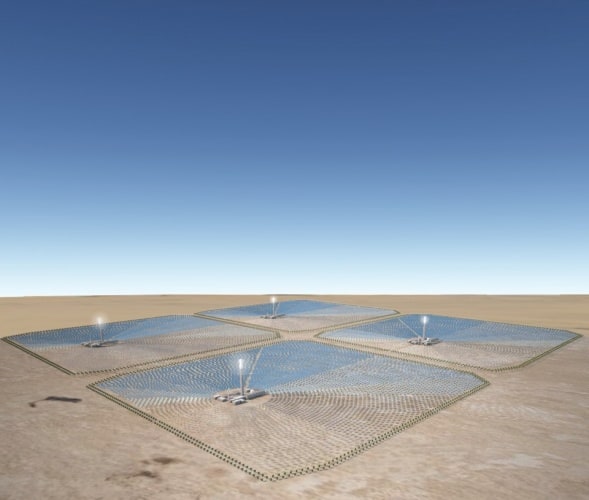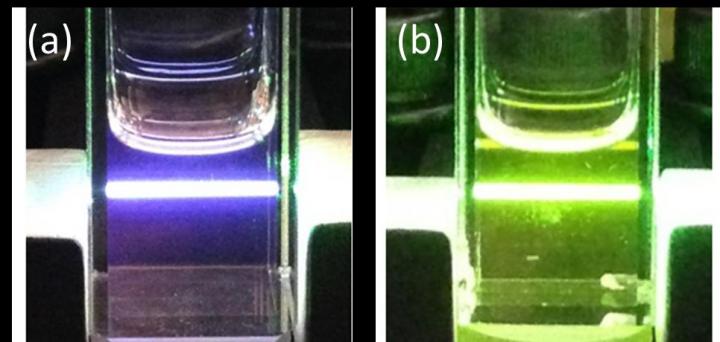
The team’s report, published in Nano Letters, explains that by combining inorganic semiconductor nanocrystals with organic molecules, they were able to “upconvert” photons in the visible and near-infrared regions of the solar spectrum.
“The infrared region of the solar spectrum passes right through the photovoltaic materials that make up today’s solar cells,” said professor of chemistry Christopher Bardeen.
“This is energy lost, no matter how good your solar cell. The hybrid material we have come up with first captures two infrared photons that would normally pass right through a solar cell without being converted to electricity, then adds their energies together to make one higher energy photon.”
According to Bardeen, this upconverted photon can be absorbed by photovoltaic cells, generating electricity from light that ordinarily does not produce any.

“The key to this research is the hybrid composite material – combining inorganic semiconductor nanoparticles with organic compounds,” he said.
“By using a hybrid material, the inorganic component absorbs two photons and passes their energy on to the organic component for combination. The organic compounds then produce one high-energy photon. Put simply, the inorganics in the composite material take light in; the organics get light out.”
The inorganic materials used to make the hybrid composite were cadmium selenide and lead selenide semiconductor nanocrystals, with the organic compounds diphenylanthracene and rubrene forming the other component.
The team also believes the technology has a wide range of possible applications beyond solar energy, such as biological imaging, data storage and organic light-emitting diodes.




IEA report claims batteries are ‘changing the game’
The weight and bulk of static batteries, even domestic units, is immaterial. The IEA's trilemma is illustrated here:-...